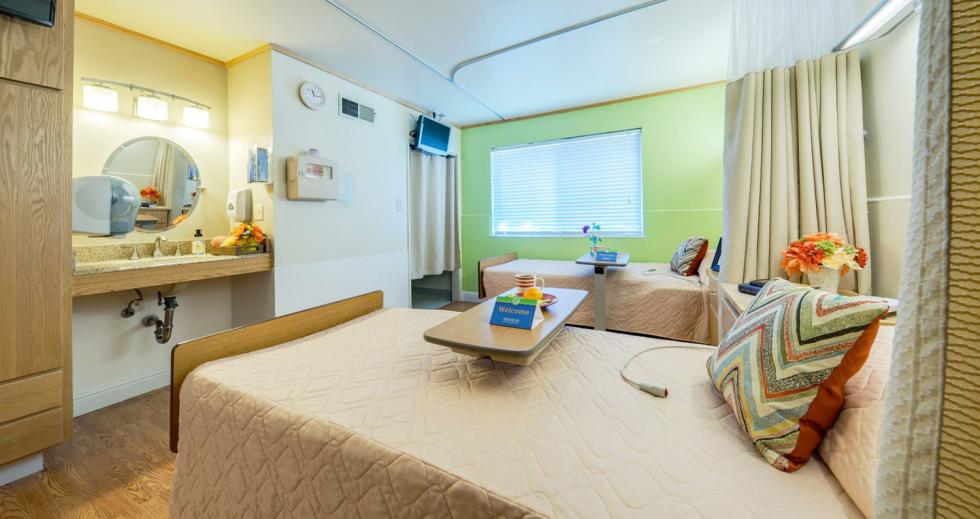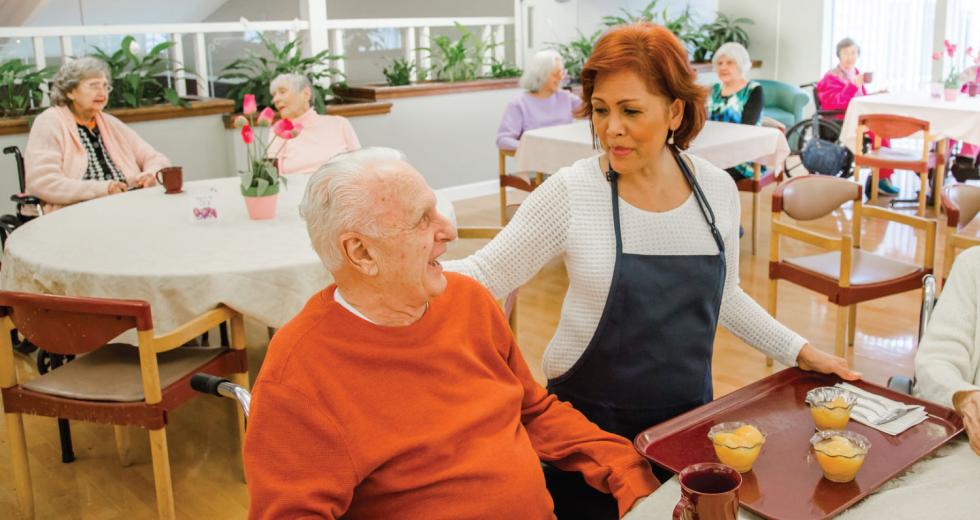The baby boom is now the silver tsunami.
By 2030, the state’s over-65 population will almost double from 4.6 million to 8.6 million, according to state figures. For companies that innovate better ways to serve them, that means opportunities — apps to help loved ones coordinate care, products to help older people get around and remote tech support to help with computer challenges.
But having the right mix of specialized housing for older adults requires investors and policymakers to project years out and make smart bets, given the huge investments required. On that score, the Capital Region may be in trouble. State numbers show Sacramento is on track for a shortage of nursing homes by 2030 and an oversupply of assisted-living facilities.
It Costs At Least $40 Million To Construct A 100-bed Facility, But At Current Medical Reimbursement Rates, The Repayment Window On That Investment Is 70 Years.
The Daunting Economics
Nursing homes are like lawyers: Everyone hates them until they need one. An accidental fall often is what forces someone into a skilled-nursing facility. They’re a critical piece of the puzzle in caring for people who need round-the-clock support because they provide some of the acute care hospitals provide but at about an eighth of the cost.
But the coming wave of older adults who will need care in about a decade may swamp the number of homes available by then. A November 2016 report by the Public Policy Institute of California projected a 65-percent rise in the number of seniors in the Sacramento area (El Dora- do, Placer, Sacramento, Sutter, Yolo, Yuba counties) who will need skilled-nursing care by 2030 — about 7,400 more people. To meet that demand, the area would need to add about 144 beds a year, or 2,300 total. But a Comstock’s analysis of state data shows it’s added only about 38 beds a year since 2014.
Nursing homes say what’s driving those trends is underpayment for long- term care patients who can’t pay their own way. Their residents fall into three main buckets. One group, paid for by Medicare, stays a short period for acute-care needs, such as follow-up services after surgery. Another group needs long- term care for chronic conditions but pay for it themselves or it’s paid by insurance, such as through a long-term care plan. The third group needs long-term care but doesn’t have the resources to pay, so they’re covered by Medi-Cal.
The underfunding of this last group is what nursing homes say drains their ability to stay afloat. On average, 70-80 percent of nursing home residents are Medi-Cal recipients, says Jason Belden of the California Association of Health Facilities. The state’s nursing homes lose about $15 a day on each Medi-Cal patient, according to 2015 data from the American Health Care Association. Facilities make up those losses with patients in the other two buckets, whose rates are higher.
For investors, that could be daunting. Belden says it costs at least $40 million to construct a 100-bed facility, about average size. But at current reimbursement rates, the repayment window on that in- vestment is 70 years. “We have a lot of our peer nonprofit providers in skilled nursing that are getting out of the business,” says Sheri Peifer of Carmichael-based Eskaton, which runs a network of skilled-nursing facilities.
Worse, Peifer says there’s more competition now for patients in
the Medicare-paid bucket because hospitals more often send them
straight home with support from in-home care providers, skipping
nursing homes altogether. Eskaton is adapting
by
To compete with in-home care providers, Eskaton offers
skilled-nursing facilities and services that can’t be provided at
home. (Photo courtesy of Eskaton Care Center Manzanita.)

Assisted-Living Overload
The economics of assisted-living facilities are a different world entirely, because residents, or their insurance plans, pay for services, meaning the market sets rates. Assisted-living units offer help with daily care but not as much as nursing homes (meals, help with medications, house- keeping, laundry).
Those pay rates, and the coming demographic bulge, have investors betting big on assisted living both locally and nationally. Comstock’s analysis of state data show that the six-county area jumped 85 percent, from fewer than 13,000 assisted- living beds in June 2015 to almost 24,000 beds in September 2019.
Sacramento’s building boom is no anomaly, says Deborah Draves of Folsom-based LookingforCare.com, which connects families with assisted-living services. State data show almost 18,000 units in the construction pipeline for the next 12 months, a boost in supply of nearly 8.5 percent, she says. Nationally, the number of senior housing units built per year grew by 43 percent from 2012 to 2018 compared with 2006 to 2012, according to a report last fall.
Draves is skeptical all those units are going to be bought and points to Citrus Heights-based industry analyst Steve Moran, who also expressed skepticism of the idea that rising demand will soak up the new units. Nationally, senior housing occupancy rates are at their lowest level since 2011, according to second-quarter data from the National Investment Center for Seniors Housing & Care.
Draves cites several reasons she’s wary. People are waiting longer to move to assisted living: The recession wiped out many people’s equity, and boomers didn’t save as much as their parents, meaning those going into assisted living are older, frailer and have a shorter length of stay.
Meanwhile, as competition for new residents has increased, the cost of recruiting them is going up and now is equivalent to the revenue from 6-9 months of occupancy, she says. All of that means lower margins. “I don’t know who this glut of available apartments is truly going to be able to serve at current pricing,” she says.
The Promises of New Approaches
How to provide enough long-term care for the bulging population of seniors has been a top priority of Gov. Gavin Newsom. In his State of the State Address, he called for a Master Plan for Aging, and in June signed an executive order for a work group to develop the plan by October 2020. One of its key focuses will be addressing the looming long-term care shortage.
Hospitals and skilled-nursing providers are working on their own solutions to keep older adults in their own homes. In December 2018, Sutter Health opened a Program of All-Inclusive Care center in Sacramento’s River District. Sutter SeniorCare PACE transports older adults who are frail enough to qualify for nursing care to the center, where they get medical care and other services in an outpatient setting. Eskaton is launching its own PACE center next July that will serve 2,000 people a day, says Peifer.
Another solution is letting Medi-Cal dollars pay for medical services provided in an assisted-living facility instead of a nursing home. Draves points to a new state pilot program, the Assisted Living Waiver, that’s testing out that idea in Sacramento and 14 other counties. It pays for care provided in assisted-living facilities with Medi-Cal dollars, though Draves says it’s time-conuming for providers and recipients to qualify. But it could help pay for beds in assisted-living facilities that otherwise could go unfilled if there is a building glut.
Another option is in-home care. The state’s In-Home Supportive Services program already pays for in-home services through Medi-Cal, and demand for in-home services is growing, says Rick Lunsford of Blossom Ridge Home Health & Hospice. His company’s profits are set to grow 35 percent in 2019 over 2018, he says.
Regardless of what happens to the nursing-home and assisted-living infrastructure, the advice for individuals remains the same as ever, says Draves: Take care of yourself. “The more you stay healthy, the more you move around, the more you take care of your body and make sure that your medications are man- aged well … that’s the No. 1 thing that’s going to improve the quality of your life,” she says.



